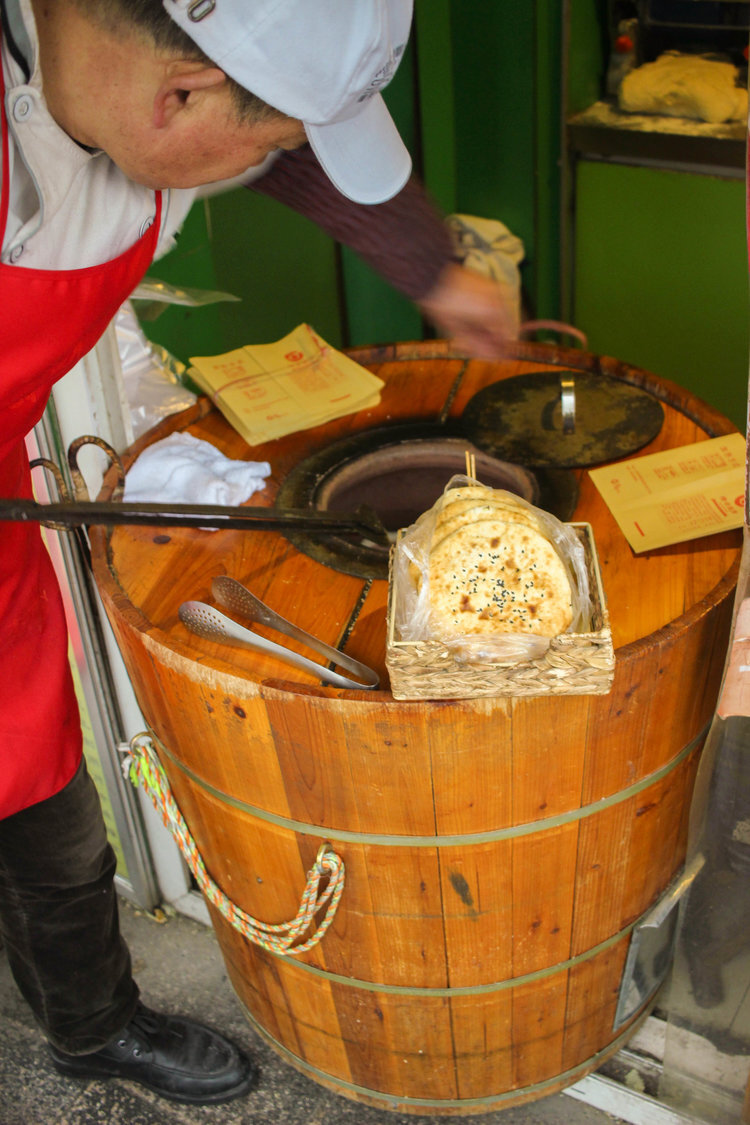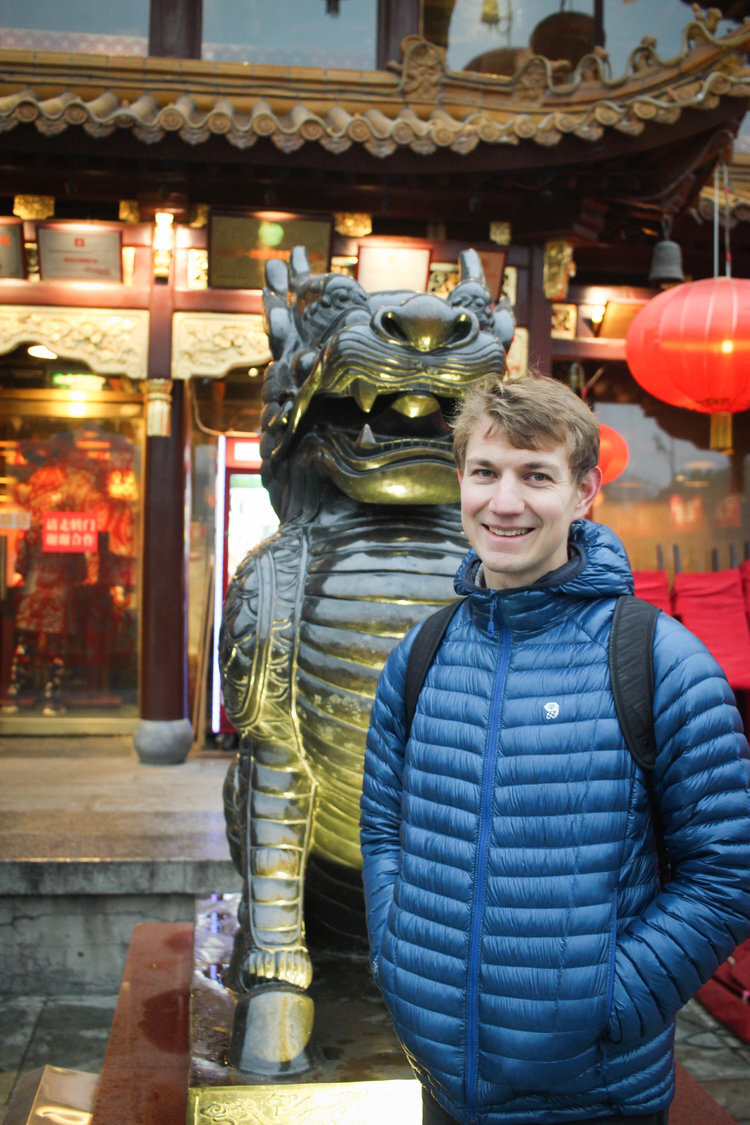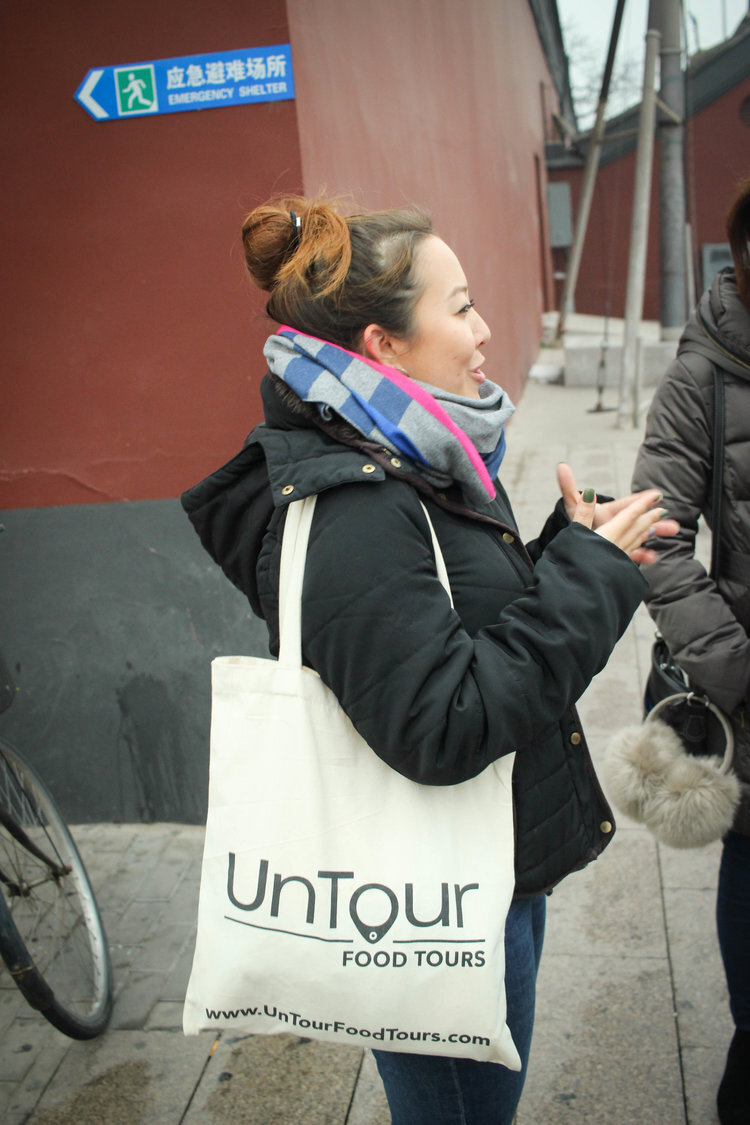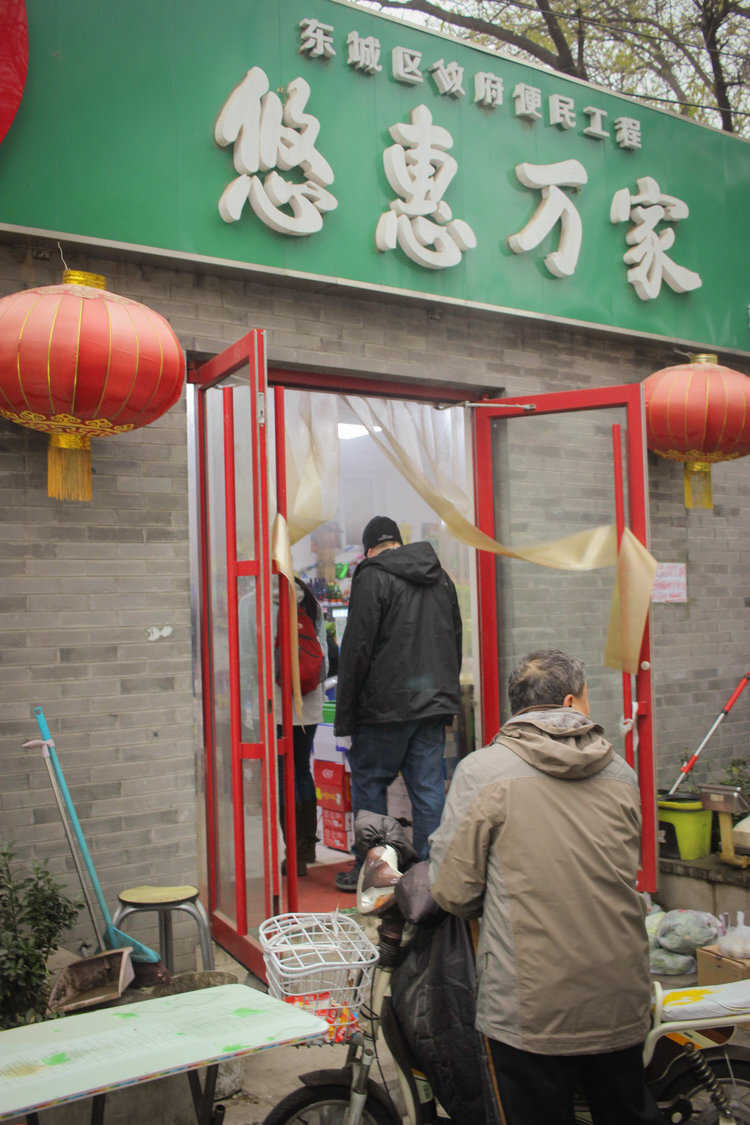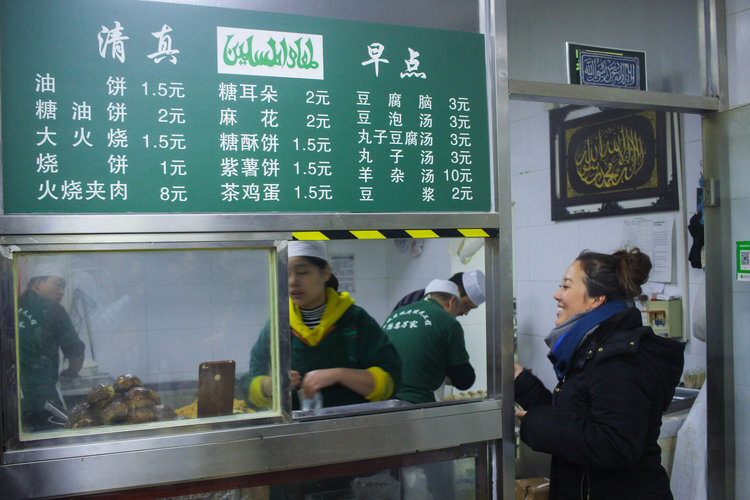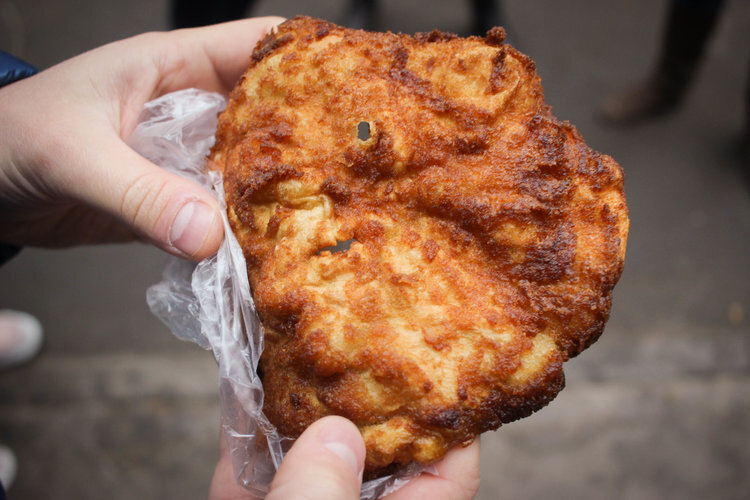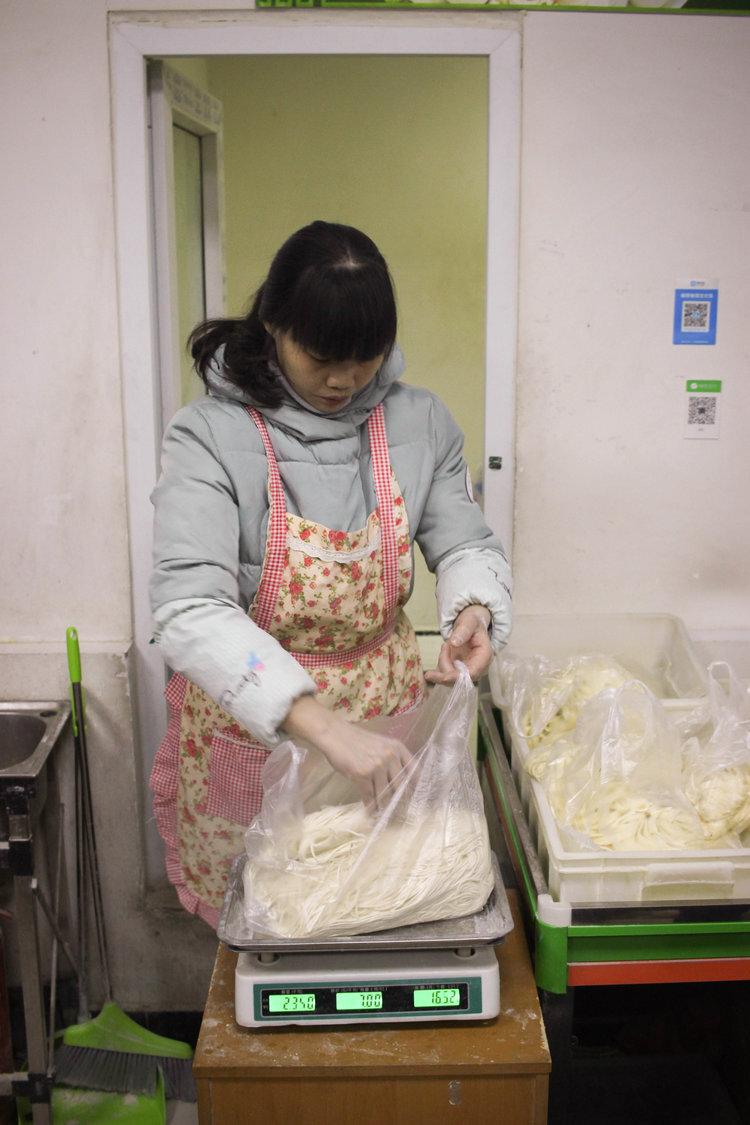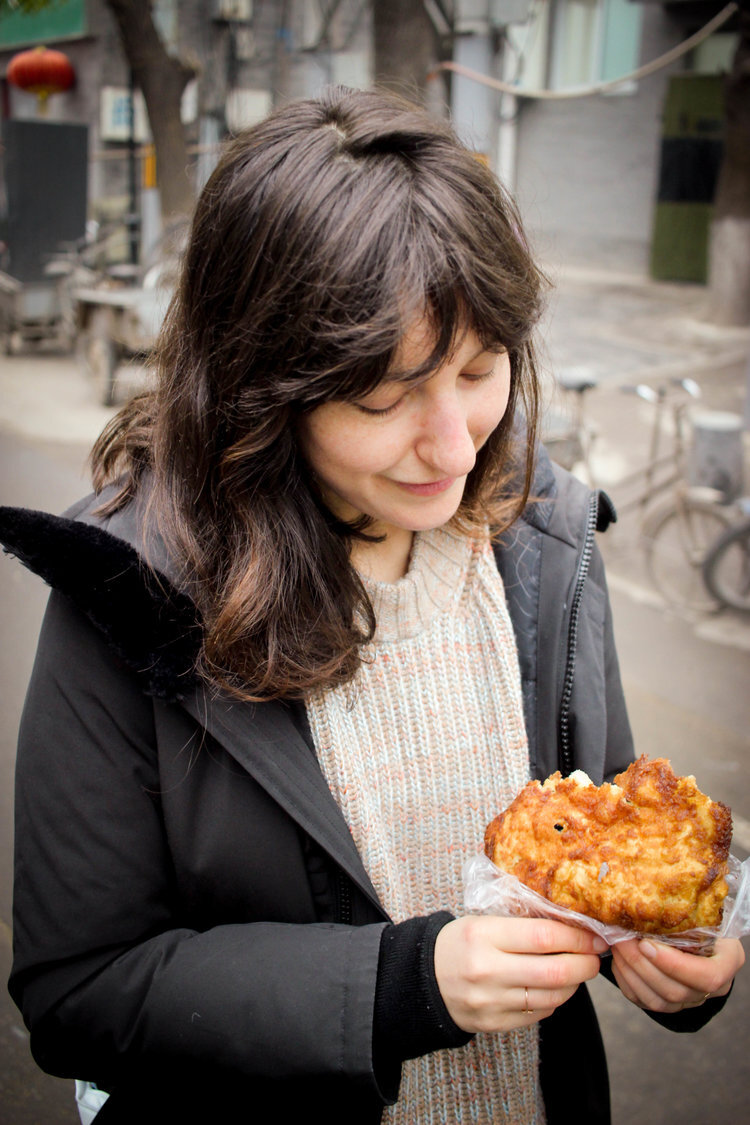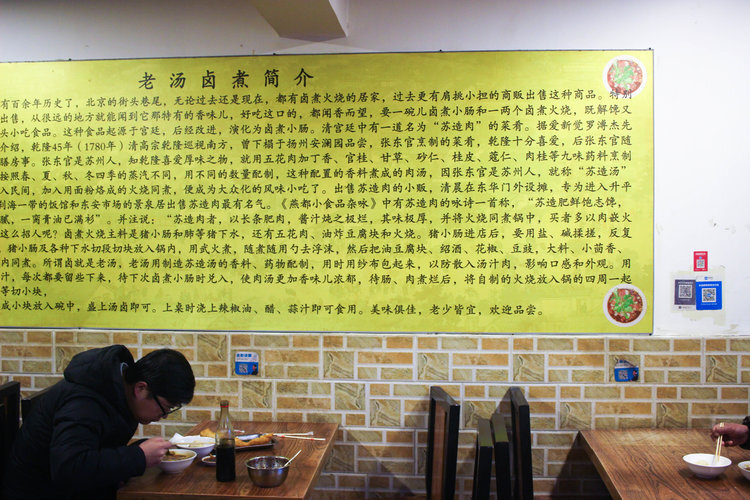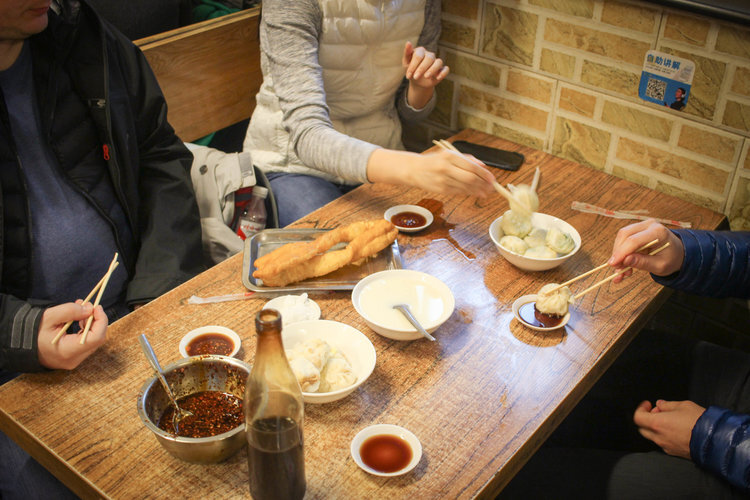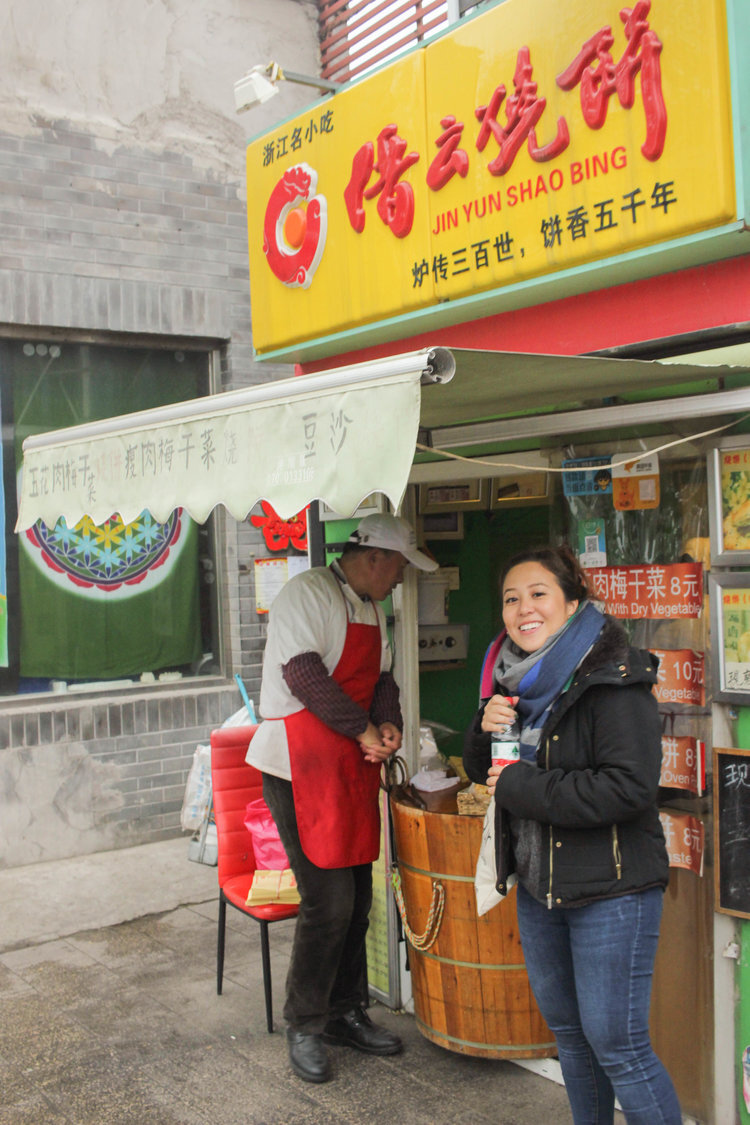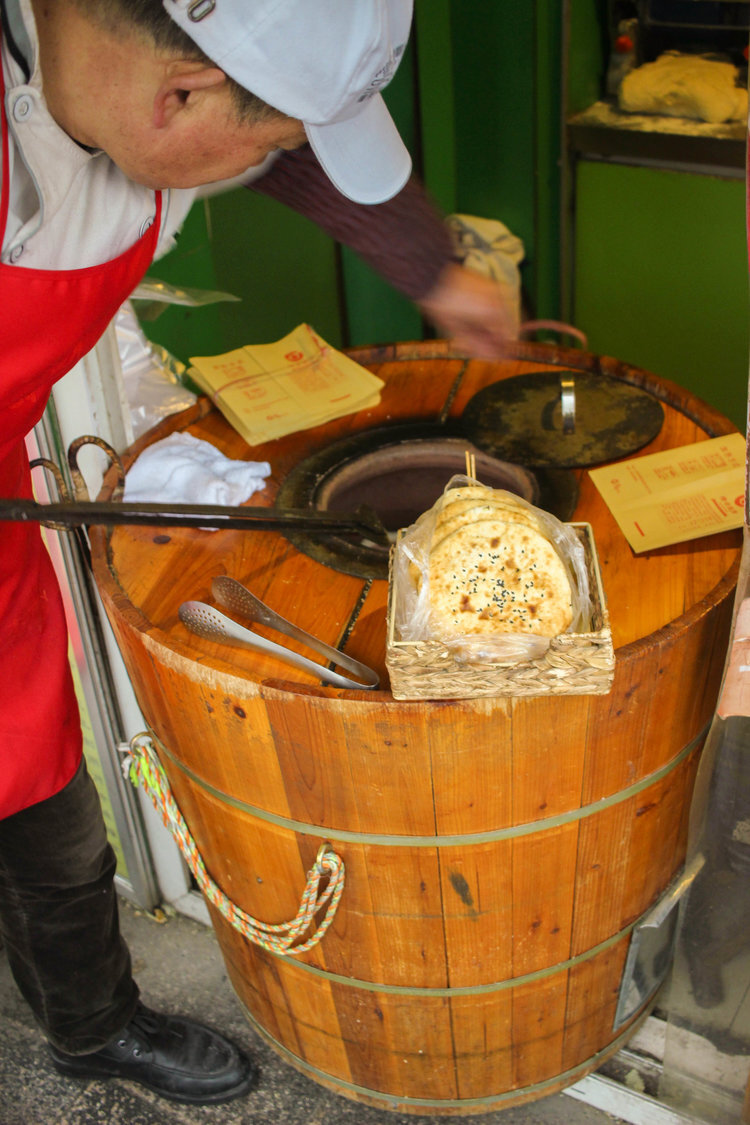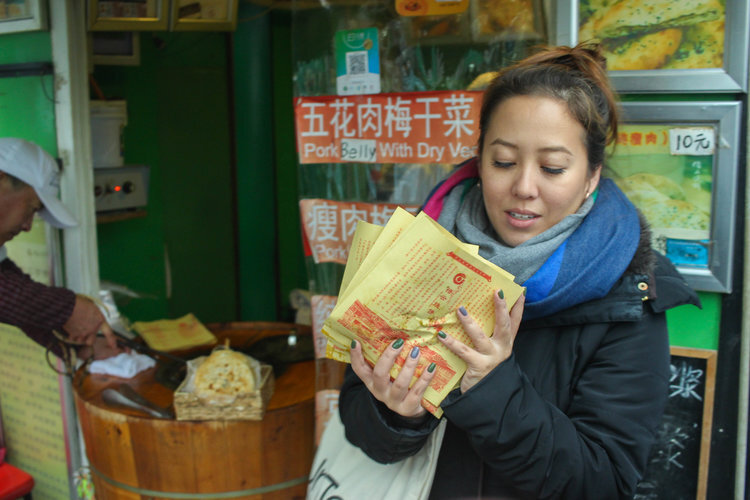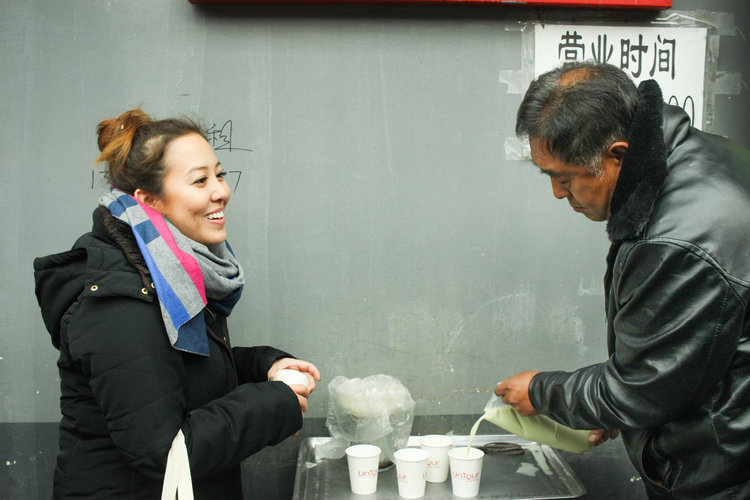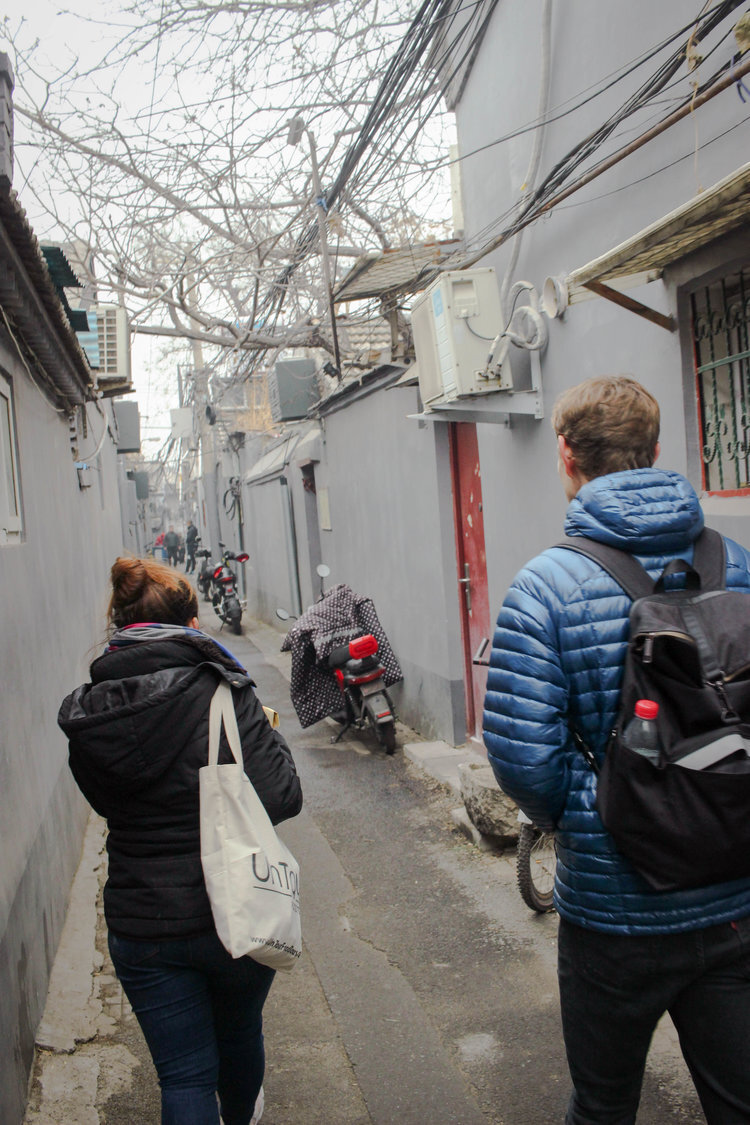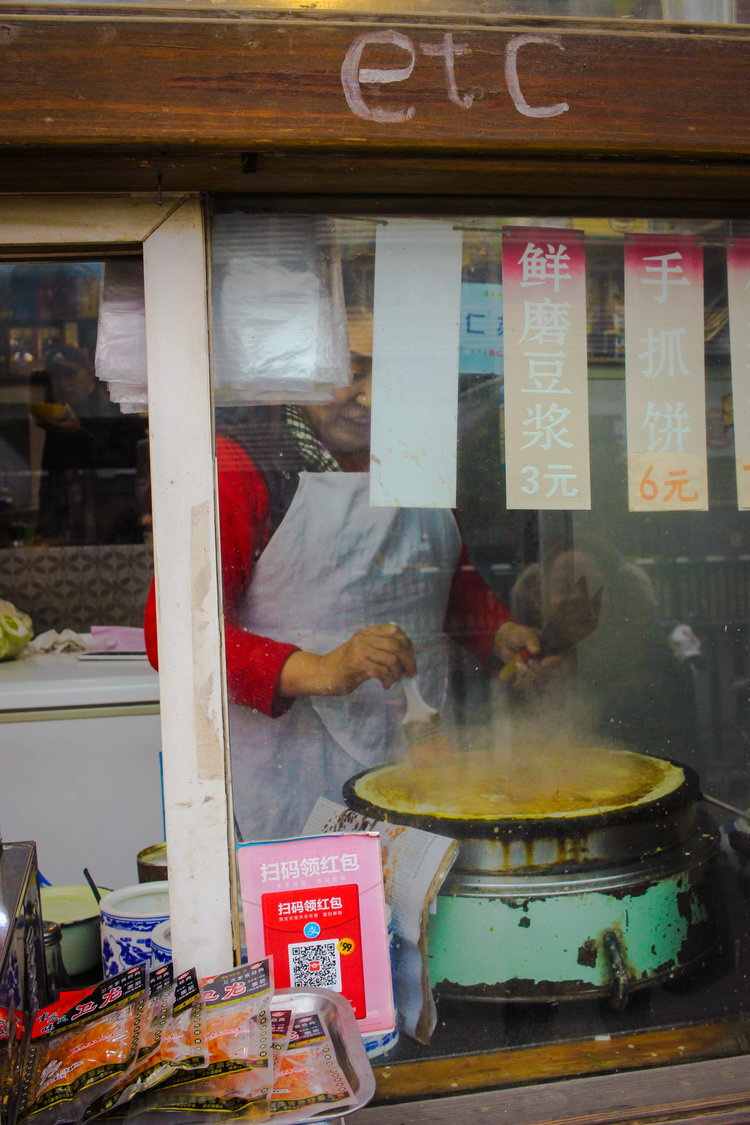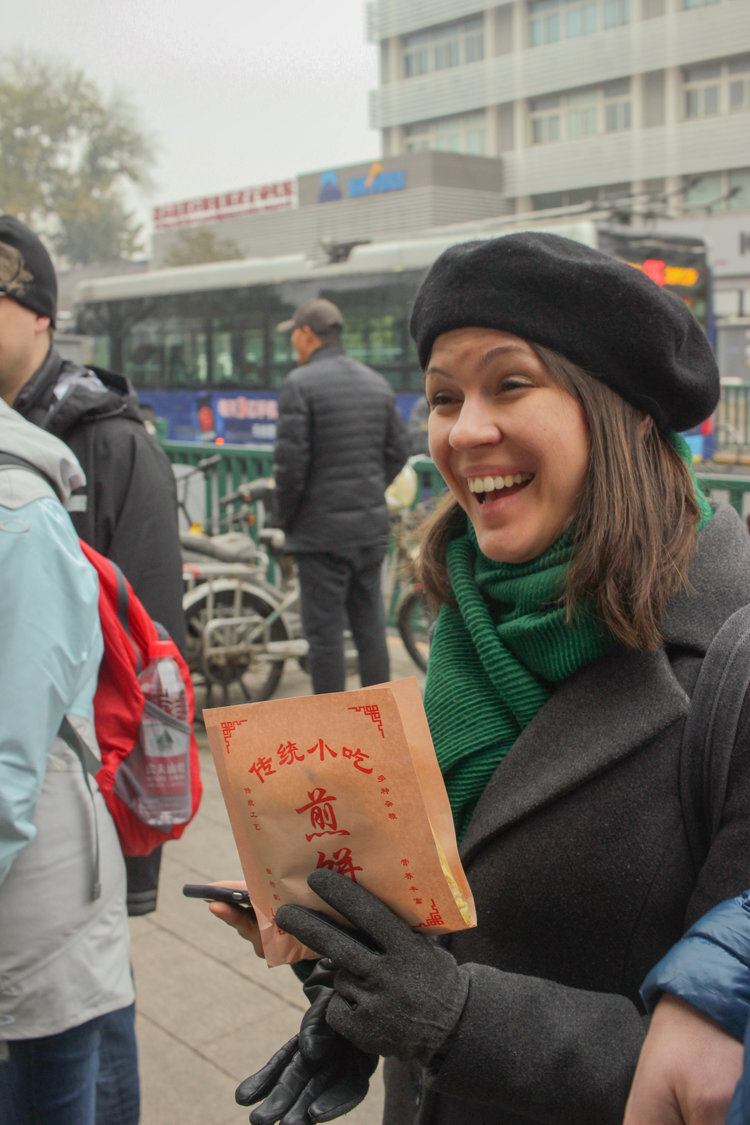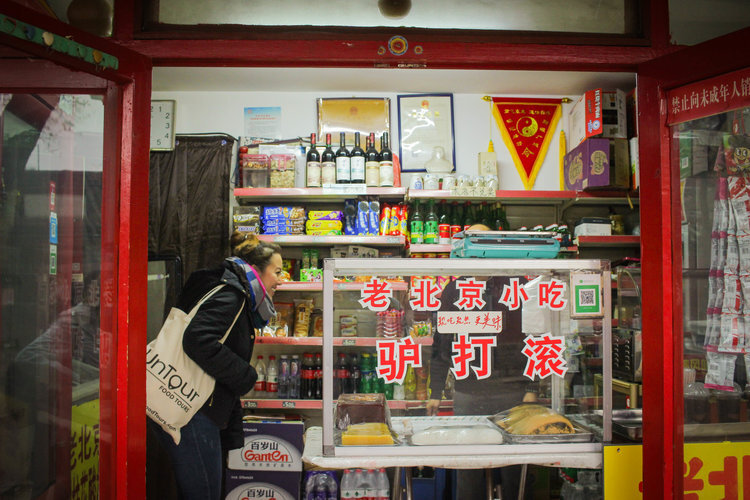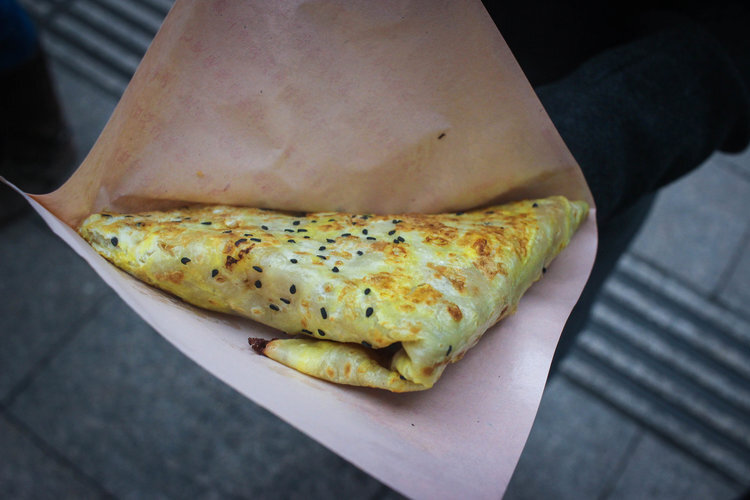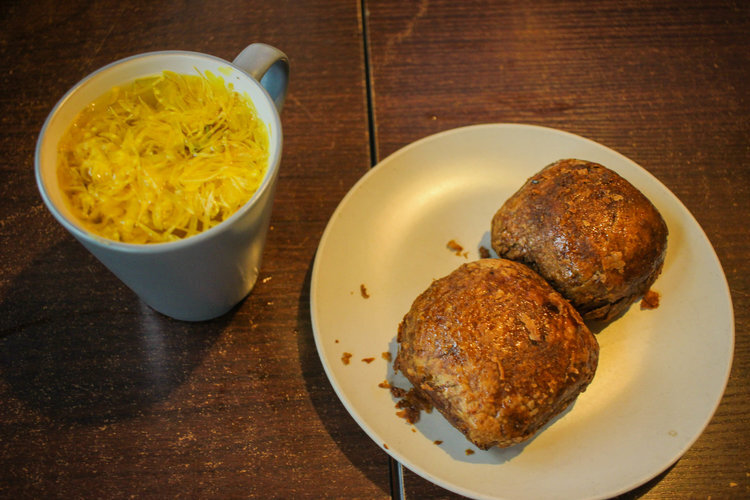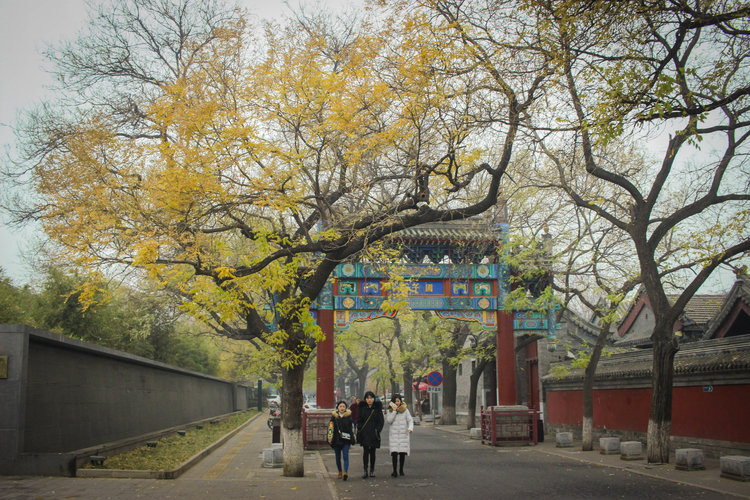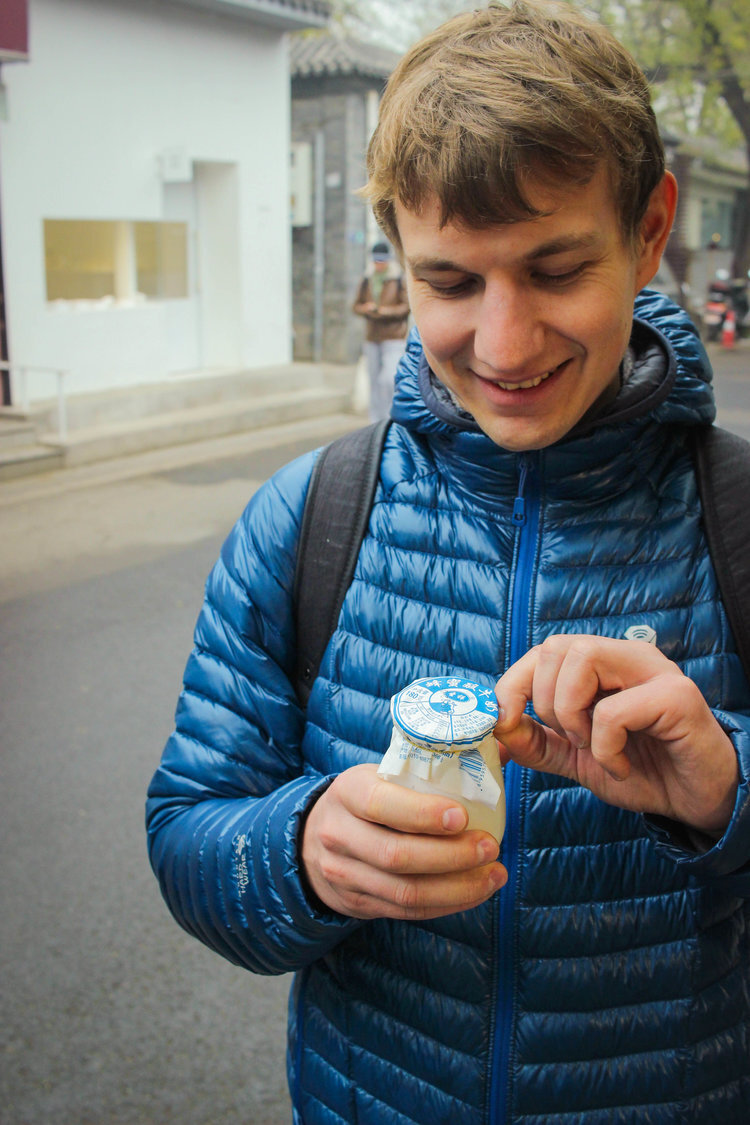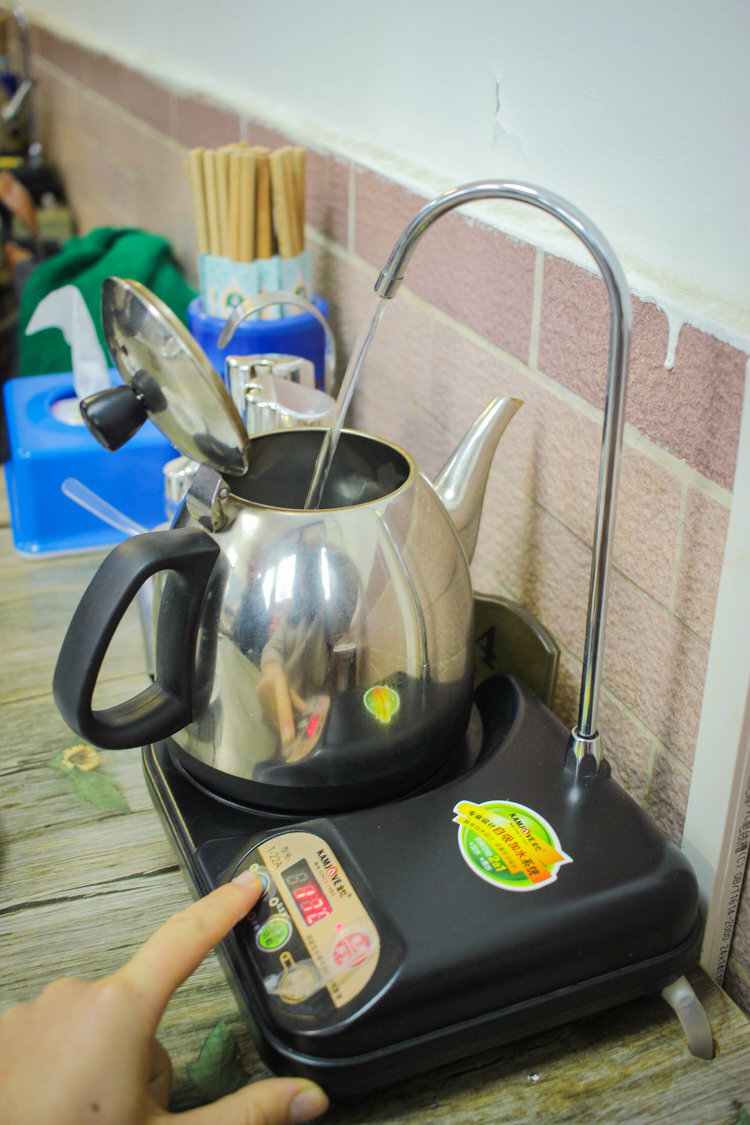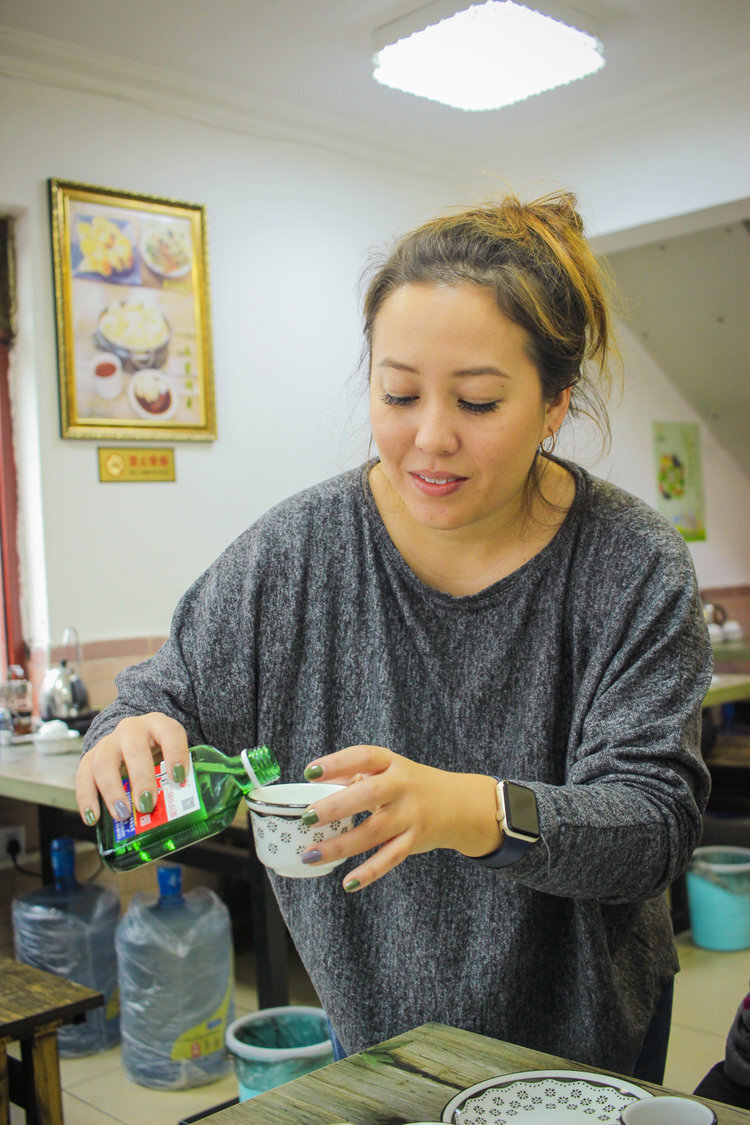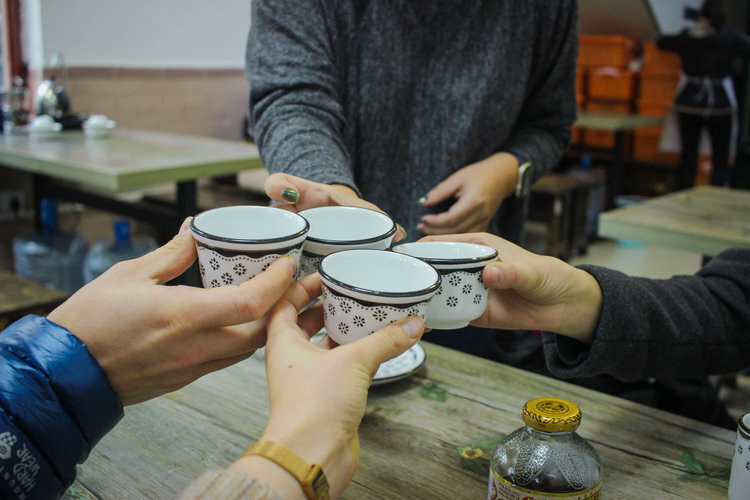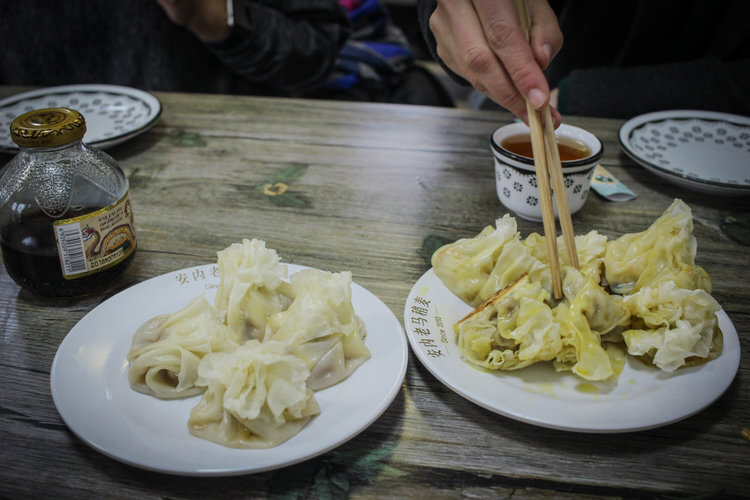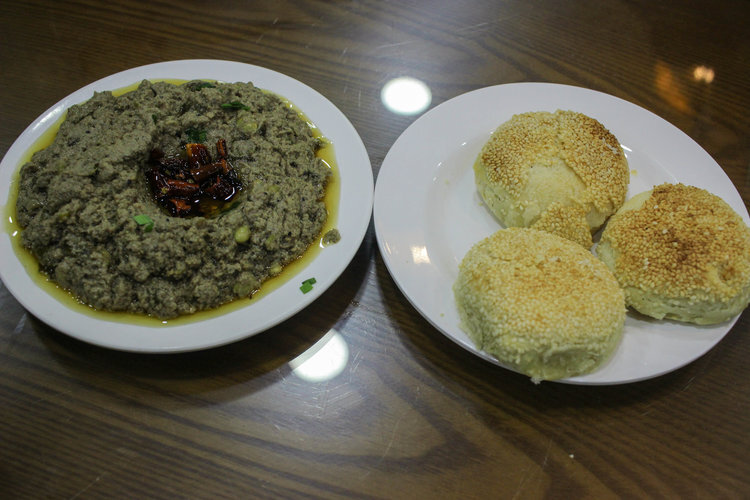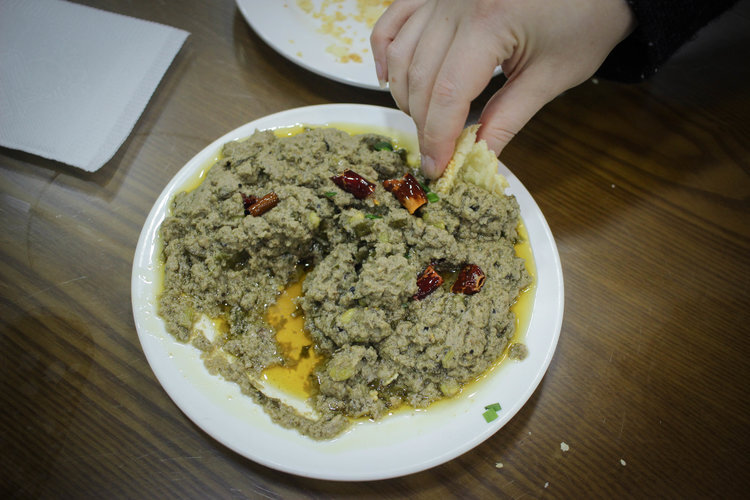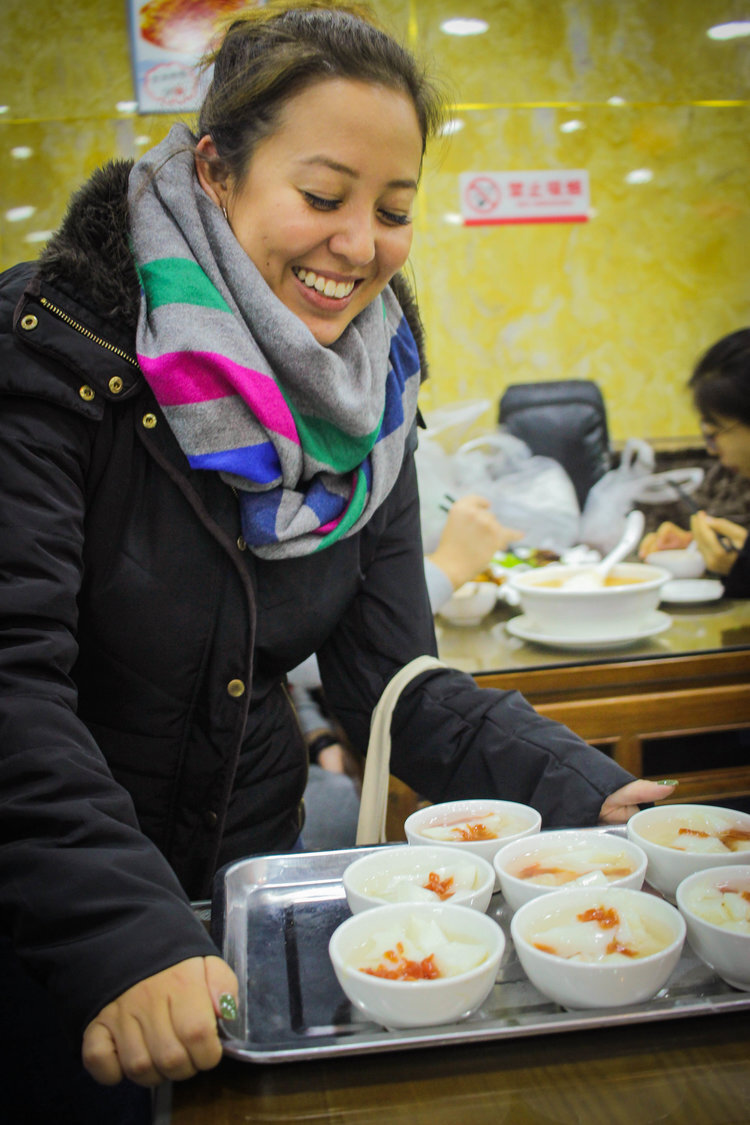Beijing, China: Hutong Breakfast Food Tour
Beijing, China was not the destination I originally set out for on my short winter holiday. Like many other travelers who fly on Air China, I stopped in Beijing for a layover before continuing onwards with my travels in Asia.
Layovers are a real pain. Starting your vacation at the intended destination is the ideal scenario because, let’s face it, sleeping on your bathroom floor is more comfortable than sleeping on an airplane and airline food is not stomachable.
So why did I welcome my layover in Beijing and even extend my layover from 4 to 22 hours? The answer can be compressed into one word: dumplings.
I embraced this exciting and unique opportunity to quickly dive into Beijing’s culture and of course, eat some delicious food. With a U.S. passport, I effortlessly secured a 3-day visitor Visa in China at Beijing’s airport, gathered my belongings, and then headed for my Airbnb to begin my adventure.
The food in Beijing carries its own reputation and distinction. Beijing cuisine, also known as Jing cuisine, Mandarin cuisine and Peking cuisine, is regarded as the national food of China - even though the food in Beijing is not necessarily eaten in most other parts of China. Because China is a country with many ethnic groups, dialects, languages, religions, and cuisines, “Chinese food” is a misnomer.
There is perhaps no food item more commonly eaten and beloved in Beijing than the dumpling. Dumplings can take on infinite shapes, textures, sizes, and fillings. Naturally, I wanted to try as many types of dumplings as possible during my short stay, but I felt completely overwhelmed by the number of restaurants and food stalls, most of which only have menus written in Chinese characters. To make sure I ate from the best (and safest) local spots during my finite time in Beijing, I knew I needed a food tour guide to lead the way.
The morning after I arrived in Beijing, my partner and I rolled out of bed up at 7am sharp and headed straight to the best hutong for a breakfast dumpling tour with UnTour Food Tours. Hutongs are narrow alleyways commonly found in Northern China. Carved around the traditional courtyards build in dynastic China, the hutongs in Beijing today are filled with tiny shops and food stalls that are frequented by locals.
We met our guide Julia at 8am in the center of the city. Julia came fully prepared on this gloomy and smoggy December day with her bag of supplies and warm smile. You could sense from her genuine enthusiasm that she was excited to share with us the city she has called home for the last 10 years.
Walking into our first eatery, I saw hungry locals quickly eating their soy milk porridge and fried dough. Next to the cashier, a young woman working at the restaurant weighed homemade, hand-pulled noodles into equal sized bags. The chaos of the scene excited me, but since our group did not fit inside the tiny food stall, we grabbed our goods and headed back to the hutong. There we shared the loaves of the sugary fried dough - a simple but popular grab-and-go breakfast item in Beijing.
Dumplings are broadly classified as pieces of dough, typically wrapped around a filling. They are either steamed, fried, or steamed and then fried; occasionally they are boiled or baked. The best way to eat them is to first gently drag them through a self-made mixture of soy sauce, vinegar, and chili oil.
Beijing is famous for its dumplings because one of northern China’s main agricultural products is wheat. Whereas the warmer weather in southern China is conducive to growing rice, wheat reigns king in the more frigid north.
The next dumpling shop we visited offered a variety of doughy dumplings filled with spinach and meat. We also tried another variation of fried dough (one of the hundreds of variants of fried dough) and dunked the long and irregularly shaped pieces into the plastic bowls filled with sweet soy milk.
Making our way back into the alley, our next stop showcased a snack that fused Indian and Chinese culinary techniques. Similar to a tandoor, this Indian-inspired oven has a deep metal hole that can cook 20-30 freshly baked breads at a time. After we placed our order, the cook took the seasoned pork filling, and enveloped it in a doughy ball. Then she flattened it, topped with sesame seeds, and passed it to her teammate who slapped it onto the inside of the oven. Once the bread got to a crispy brown texture, he used large metal prongs to reach into the cavernous space and pull out the perfectly crispy bread.
Here it dawned on me that these cooks make this same street snack every day - perhaps for most of their working lives. They are so skilled at making this one dish, that watching them effortlessly assemble everything from start to finish mesmerized me. This is an art that I do not see at home.
As we sauntered through the hutong, we stopped at another hole-in-the-wall to purchase and try some freshly squeezed mung bean juice. The taste may not have agreed with some (I’m in that camp), but there is no denying the health benefits of this drink. Mung bean juice is packed with nutrients and has high antioxidant levels, which is said to reduce the risk of chronic diseases.
Next we tried jianbing, which is akin to a Chinese breakfast crepe. After the crepe batter is ladled onto the circular cooking vessel, the cook cracks an egg on top and evenly spreads the yolk around. Then come the chives, sesame seeds, fried wonton cracker, and mixture of savory, dark sauces. Folded together and served hot, it’s no wonder why this is the most popular breakfast street snack eaten in Beijing.
To get relief from the cold weather outside, we headed to a tea shop that served European style coffee drinks and Chinese herbal teas. I choose the chamomile tea, which the barista brewed using whole, fresh chamomile flowers. We paired our warm drinks with flaky, black sesame seed filled pastries. I welcomed this cozy stop before bracing myself for the brisk temperature outside. Fortunately, the weather on this day was warmer than usual - December temperatures in Beijing average between 21 and 38 degrees Fahrenheit.
Next came the most surprising of the food stops: a fresh yogurt drink sweetened with honey. Expecting something tart and pungent, we punctured our straws into the blue paper lids and instead sipped a sweet and creamy yogurt drink.
For the last stop on the tour we had sesame seed buns (made with plenty of oil) dipped into a mung bean pulp dip with chilis and oil. I am still surprised that the oil came from the fat of sheep’s butts. Yes. We ate sheep butt oil. The strong flavor definitely made this the most memorable dish, for better or for worse. For a bit of a sweeter finish, we ate almond jelly in a sweet osmanthus (floral) syrup.
I loved wandering through the labyrinth of alleyways with Julia. We all picked her brain about life in China, cultural norms, and quizzed her on her favorite foods in Beijing. You can fool yourself into trying to do a food tour in a new city on your own, but it is no match to wandering with a local. UnTour Food Tours is guaranteed the best way to spend a short trip in Beijing, so don’t despair when your next layover is in Beijing and sign up for a food tour with them.
To sign up for one of their tours, you can visit them at https://untourfoodtours.com/

